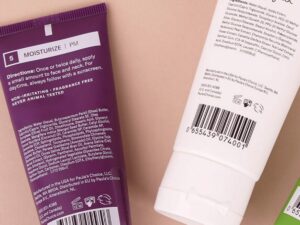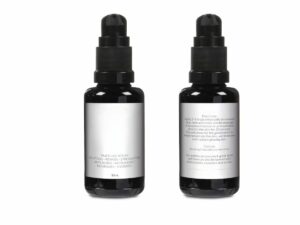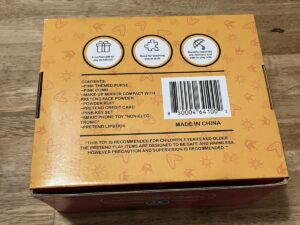Are you aware of how FDA cosmetic labeling regulations can impact your product’s marketability? Ensuring compliance with these standards is a critical factor in building consumer trust and loyalty.
As an expert in cosmetic industry, I bring years of experience and deep insights into the complexity of compliance and its significance in the cosmetic industry.
FDA’s requirements for cosmetic labeling are designed to protect consumers by providing them with essential information about the product’s ingredients, usage, and safety.
In this guide, we will delve into the key aspects of FDA cosmetic labeling regulations, such as the ingredient listing and the importance of font size and placement. We’ll explore how to effectively navigate these requirements to ensure your products appeal to your target market through transparency.
Read on get complied!
The FDA has set specific labeling requirements for cosmetics to ensure consumer safety and product transparency. These regulations mandate that all cosmetics sold must have a label that accurately lists all ingredients such as the quantity of contents. This foundational requirement aims to inform consumers about what they are applying to their bodies and to prevent illusive packaging.
Moreover, the FDA requires that labeling must not make claims that would categorize the product as a drug unless it has been approved. This distinction is crucial for cosmetic brands to understand, as it influences how a product can be marketed. The guidelines also emphasize the importance of the label’s legibility, specifying that all information must be easily readable under normal conditions of purchase and use.

Building on our understanding of FDA cosmetic labeling requirements, it’s essential to dive deeper into the specific elements that must appear on your product’s packaging. Here are the key labeling elements that require careful consideration:
The principal display panel is the part of the label most likely to be seen by consumers at the time of purchase. It must include the product’s identity and the net quantity of contents. This panel plays a crucial role in attracting the consumer’s attention and providing them with immediate product recognition.
Located adjacent to the PDP, the information panel houses essential data such as the ingredient list, manufacturer information, and any necessary warning labels. This panel is integral for consumers seeking detailed product information, including usage instructions and safety precautions. As I vouch for the integrity of cosmetics, I find the transparency provided by the information panel absolutely crucial.
Ingredients must be listed in descending order of predominance. This requirement ensures transparency, allowing consumers to understand what is in the product they are using. It’s especially important for those with allergies or sensitivities to specific ingredients. Nako Cosmetic adheres strictly to this element, providing detailed ingredient listings for all their skincare and cosmetic products to ensure trust and safety.
| Importance | Description |
| Transparency | Listing ingredients in descending order of predominance ensures transparency, enabling consumers to understand the composition of skincare and cosmetic products, fostering trust and confidence in the brand’s commitment to safety and integrity. |
| Allergen and Sensitivity Awareness | Clear ingredient listings help consumers with allergies or sensitivities identify potential triggers and avoid products containing ingredients they may react to, reducing the risk of adverse reactions and promoting safer usage of skincare and cosmetic products. |
| Informed Consumer Choices | Accessible ingredient information empowers consumers to make informed choices about the products they use, allowing them to select formulations tailored to their skin type, concerns, and personal preferences, enhancing satisfaction and efficacy of skincare and cosmetic routines. |
| Regulatory Compliance | Adhering to ingredient listing regulations ensures compliance with regulatory standards and guidelines governing cosmetics, demonstrating a commitment to consumer safety and regulatory compliance, mitigating risks of non-compliance and associated legal and reputational consequences. |
| Trust and Brand Reputation | Providing detailed ingredient listings reinforces brand transparency, credibility, and reliability, building trust and loyalty among consumers who prioritize safety, quality, and ethical sourcing practices, enhancing brand reputation and fostering long-term relationships with discerning consumers. |
The net contents statement informs the consumer about the amount of product contained within the packaging, typically measured by weight or volume. This statement must be clear and conspicuous to avoid misleading the consumer about the product’s actual size or quantity. Accurately communicating the net contents has always enhanced customer trust.
This information is crucial for accountability and consumer trust. It enables consumers to know who is responsible for the product, facilitating contact in the event of inquiries or complaints. MEYERS reports that 94% of consumers are more likely to remain loyal to brands that offer complete transparency. Including the name and address of the business ensures honesty and promotes consumer confidence.
Any potential hazards associated with the product’s use must be clearly stated on the label. Warning and caution statements are crucial for consumer safety, guiding them on how to use the product safely and what to do in case of an adverse reaction. This transparency is essential for maintaining consumer trust and compliance with FDA regulations.
Following the breakdown of labeling elements, it’s important to note that specific product categories within cosmetics have additional and unique labeling demands. Here are the labeling requirements for some distinct cosmetic product categories:
Sunscreen products hold a unique position as they are regulated as both cosmetics and over-the-counter drugs. This dual status requires comprehensive labeling to ensure consumer safety and product efficacy. Here are the key labeling requirements for sunscreen products:

Products that offer both cosmetic and therapeutic benefits are subject to strict labeling to accurately convey their dual functionality. I’ve always admired the skill required to craft labels that effectively communicate the multifaceted benefits of these products. Here are the key labeling requirements for these products:


Cosmetics designed for children’s use demand extra caution in labeling to ensure the utmost safety and suitability for young, sensitive users. As a proponent of safe skincare, I believe that products for children deserve our best attention and care in labeling. Here are the key labeling requirements for children’s cosmetics:

Moving from the detailed exploration of labeling requirements, it’s crucial to understand how labeling claims can affect compliance and consumer perception. Here are the aspects of labeling claims and compliance in the cosmetics industry:
Cosmetic labels must only make claims that are truthful and not misleading. This principle ensures that consumers are not deceived by exaggerated benefits or functionalities that the product cannot deliver. Claims regarding the product’s effects must be supported by evidence, maintaining integrity and trustworthiness. Misleading claims can result in regulatory action and damage to the brand’s reputation.
Any claim made on a cosmetic label, especially those related to performance and safety, requires empirical data to support the claims made. For instance, if a product is labeled as hypoallergenic, the brand should have evidence to prove that the product is less likely to cause allergic reactions. Nako Cosmetic ensures that all their product claims are backed by testing and evidence to provide transparency and trust to their clients.
Claims related to environmental benefits or ethical considerations, such as eco-friendly are increasingly common on cosmetic labels. For instance, a product labeled as cruelty-free should have verifiable information about the absence of animal testing. While not directly regulated by the FDA, these claims must not be misleading and should be substantiated by the brand.
After examining the significance of labeling claims and compliance in cosmetics, it’s essential to spotlight common pitfalls that can undermine a brand’s credibility and regulatory standing. Here are the frequent labeling mistakes in the cosmetics industry:
Following the exploration of common labeling mistakes to avoid, it’s equally important to focus on proactive strategies for ensuring label compliance. Below are some practical tips to help cosmetic brands successfully deal with the regulatory environment:
Regulations and requirements can evolve, and it’s crucial to incorporate these changes into your labeling practices. Regular review sessions can help catch any updates to the guidelines, ensuring your labels remain up to date.
Before making any claims on your labels, verify the benefits of your product and ensuring that all ingredients are listed accurately. Conducting thorough research and testing supports your claims and helps maintain transparency.
Considering the complexity of FDA regulations, the help of professionals can be invaluable. These experts can identify potential compliance issues and provide guidance on best practices for labeling.
Periodically review your product labels for accuracy and compliance. This proactive approach catches potential issues before they become costly mistakes. Ensuring label accuracy has always been a cornerstone of building trust with my audience.
For some insightful reads, we’ve curated a list of recommended articles just for you:
Still haven’t found what you’re looking for? Don’t hesitate to contact us. We’re available around the clock to assist you.
Exploring the FDA cosmetic labeling regulations is essential for ensuring your products meet industry standards and consumer expectations. This guide aims to simplify these complex requirements, helping you maintain compliance and build trust with your consumers.
For businesses seeking further assistance or more detailed information on adhering to FDA cosmetic labeling regulations, Nako Cosmetic is here to help. Contact us to explore how we can support your compliance journey.
Own Your Private Label Cosmetic Line Is No Longer Difficult Here!
Don't let questions and needs hold you back. Reach out to us today.
How to Start Your Beauty Business?